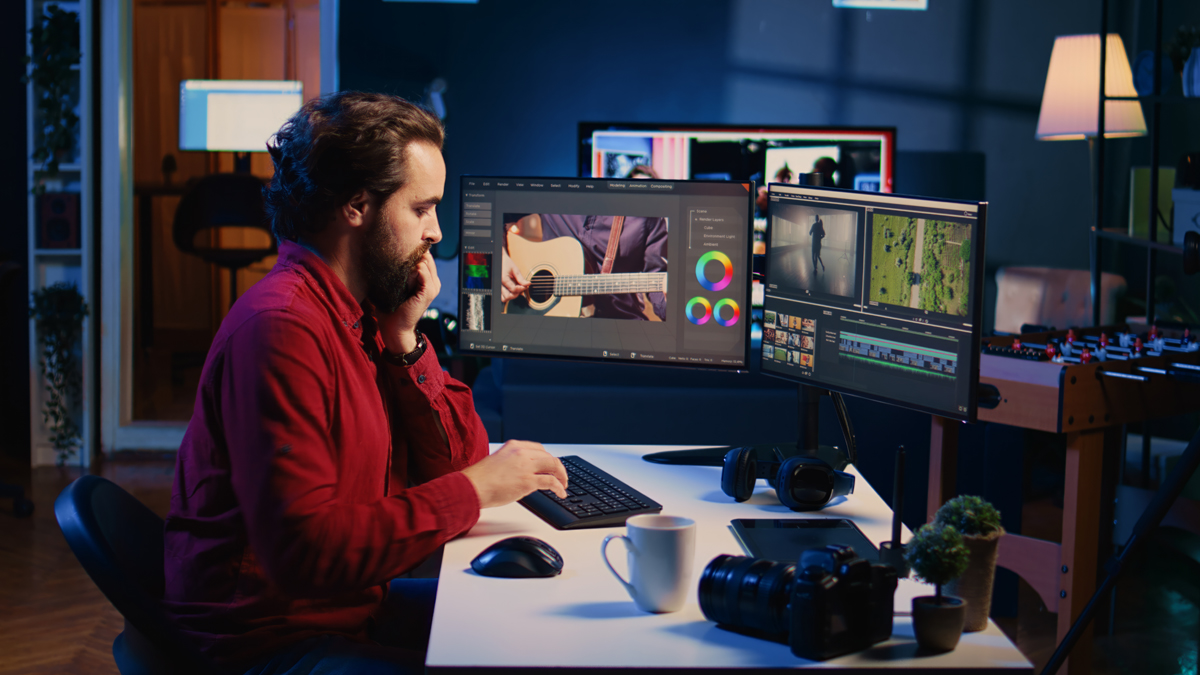Virtual production and real time rendering tools and softwares transform film, television, and immersive content by connecting game engines, camera tracking, and LED volumes in one interactive workflow. These let teams visualize environments, lighting, and effects live on set, iterate quickly, and capture final images in camera with minimal latency. Directors make confident decisions while artists collaborate across departments using shared assets and version control. These platforms support real time compositing, synchronized playback, genlock, and color managed pipelines. This guide explains core capabilities, typical use cases, and buying considerations inside the Top 10 Virtual Production and Real Time Rendering Tools and Softwares List.
I. Unreal Engine
Unreal Engine is a production proven platform for in camera visual effects and broadcast graphics, combining high fidelity real time rendering with robust on set tools. It offers Lumen global illumination, Nanite virtualized geometry, and path tracing for look development while maintaining real time previews. nDisplay powers multi node rendering for LED volumes with genlock, color calibration, and frustum control. Live Link connects tracked cameras, lens metadata, and motion capture for accurate parallax and depth. Sequencer, Control Rig, and MetaHuman streamline animation and performance capture, and USD workflows, DMX, and OSC integrations keep departments synchronized.
II. Unity
Unity targets virtual production with the High Definition Render Pipeline for cinematic lighting, real time ray tracing, and physically based shading. Live Capture links virtual cameras, facial capture, and body motion to Timeline and Cinemachine for reliable previs and in camera shots. Support for multi display, genlock, and LED wall calibration enables stable rendering across processors. Artists use Shader Graph, Visual Effect Graph, and ProBuilder for rapid look development that remains performant. Unity Recorder captures editorial plates while AR Foundation extends toolchains to simul cam and augmented overlays, keeping creative intent coherent from previs to final pixels.
III. NVIDIA Omniverse
NVIDIA Omniverse is a collaborative platform built on Universal Scene Description that unifies DCC and engine workflows for real time pipelines. Nucleus servers host shared USD assets while Live Sync lets tools such as Maya, Houdini, Blender, and Unreal update the same scene non destructively. RTX rendering delivers interactive path tracing and real time ray tracing with DLSS acceleration for high quality previews on set. Connectors, PhysX, Flow, and Fabric enable simulation driven scenes that remain consistent across departments. Audio2Face and animation utilities speed digital human iteration, and USD layers keep layout, look dev, and lighting organized for LED volumes and broadcast.
IV. Disguise Designer and RenderStream
Disguise combines Designer playback with RenderStream to orchestrate real time engines across xR stages, LED volumes, and broadcast studios. Designer handles timeline control, color management, and system health while rx render nodes distribute pixels with genlock and low latency. RenderStream links Unreal, Notch, and other engines so tracked frustums, color pipelines, and camera metadata are consistent. Native integrations support lens calibration, timecode, and free d workflows with routing over SDI or ST 2110. Combined with ACES color transforms and calibration workflows, Disguise enables predictable on set results and reliable handoff to editorial while maintaining creative flexibility.
V. Pixotope
Pixotope provides an end to end platform for virtual production, augmented reality, and extended reality with tight integration to industry camera tracking systems. It is designed for live television and events, offering multicamera switching, keying, talent tracking, and control interfaces that non technical operators can manage. Built around Unreal Engine rendering, it supports set expansion, graphics data feeds, and calibrated lens pipelines for convincing parallax. System diagnostics, failover options, and pipeline templates shorten setup time on temporary stages. Pixotope also supports remote collaboration and cloud assisted rendering, enabling distributed teams to previsualize and deliver complex shows with consistent quality and low latency.
VI. Zero Density Reality Engine
Zero Density Reality Engine focuses on real time broadcast graphics, virtual sets, and augmented reality using high quality keying and Unreal Engine rendering. The platform features a proprietary chroma keyer that preserves fine details like hair and semi transparent edges while keeping latency low. Support for multi camera workflows, tracked lenses, and dynamic lighting allows talent to interact believably with virtual environments. Native data integration pulls live scores, elections data, or newsroom rundowns into templates. Operators control scenes through an intuitive interface, and the system scales across GPUs and nodes, making it suitable for daily news, sports, and entertainment productions.
VII. Vizrt Viz Engine
Vizrt Viz Engine is a broadcast proven renderer and compositor used for real time virtual sets, AR graphics, and data driven overlays. It features a powerful graphics pipeline, extensive keying, and close integration with newsroom systems and automation. Support for Unreal Engine as a rendering layer combines game engine realism with Viz control and template workflows. Viz Engine manages multiple cameras, lens calibration, and tracking input with predictable latency for live shows. Designers build reusable packages that pull data from control rooms, while operators trigger sophisticated scenes reliably, enabling consistent branding across news, elections, sports, and studio entertainment formats.
VIII. Aximmetry
Aximmetry offers a cost effective and flexible virtual studio system that combines real time rendering, compositing, and camera tracking. It supports green screen keying, color correction, and shadow catching while leveraging its own renderer or Unreal Engine for photoreal scenes. Artists define multiple cameras and inputs, set up talent reflections, and manage light wrap and occlusion to blend live action with CG. A node based editor, scriptable control panels, and playlist automation make it practical for small teams. Whether building a compact corporate studio or a regional news set, Aximmetry enables fast deployment, reliable operation, and consistent results without heavy infrastructure.
IX. Notch
Notch is a real time motion graphics and VFX tool popular for live events, concerts, and broadcast xR, delivering interactive visuals with low latency. Its node based workflow lets designers build particle systems, volumetrics, and generative effects that respond to audio, DMX, and tracking. Notch Blocks export as portable modules that run in Disguise or other playback systems via RenderStream, enabling reliable integration on LED stages. Support for virtual cameras, depth composites, and light estimation helps align CG with talent. Artists iterate quickly on looks while maintaining performance budgets, making Notch a strong complement to engine based pipelines on tight schedules.
X. TouchDesigner
TouchDesigner is an interactive node based platform for building custom real time systems for stages, installations, and research labs. It excels at ingesting sensors, tracking, and control protocols like OSC, MIDI, DMX, and serial while composing visuals with a GPU accelerated pipeline. Developers prototype virtual production utilities such as control UIs, routing, calibration tools, and data bridges between engines and playback. Built in TOPs and CHOPs enable image processing and signal logic for synchronizing LED walls and lighting. With Python scripting, multi process rendering, and efficient I O, TouchDesigner becomes the connective tissue that keeps complex shows synchronized and responsive.

